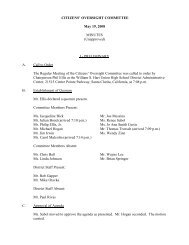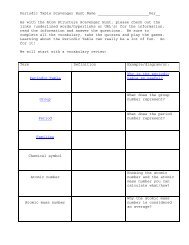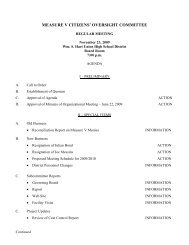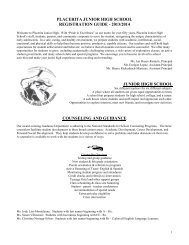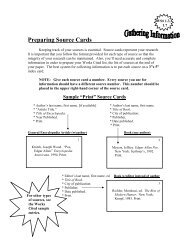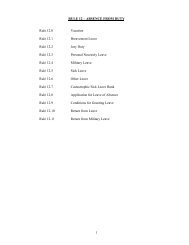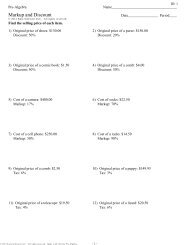Safe School Plan - William S. Hart Union High School District
Safe School Plan - William S. Hart Union High School District
Safe School Plan - William S. Hart Union High School District
You also want an ePaper? Increase the reach of your titles
YUMPU automatically turns print PDFs into web optimized ePapers that Google loves.
INCIDENT: NUCLEAR AND RADIOLOGICAL ATTACK 4<br />
(For Home and Work)<br />
Nuclear explosions can cause deadly effects—blinding light, intense heat (thermal radiation), initial nuclear radiation, blast, fires started by<br />
the heat pulse, and secondary fires caused by the destruction. They also produce radioactive particles called fallout that can be carried by wind<br />
for hundreds of miles.<br />
Terrorist use of a radiological dispersion device (RDD)—often called ”dirty nuke” or “dirty bomb”—is considered far more likely than use of a<br />
nuclear device. These radiological weapons are a combination of conventional explosives and radioactive material designed to scatter<br />
dangerous and sub-lethal amounts of radioactive material over a general area. Such radiological weapons appeal to terrorists because they<br />
require very little technical knowledge to build and deploy compared to that of a nuclear device. Also, these radioactive materials, used<br />
widely in medicine, agriculture, industry and research, are much more readily available and easy to obtain compared to weapons grade<br />
uranium or plutonium.<br />
Terrorist use of a nuclear device would probably be limited to a single smaller “suitcase” weapon. The strength of such a weapon would be in<br />
the range of the bombs used during World War II. The nature of the effects would be the same as a weapon delivered by an inter-continental<br />
missile, but the area and severity of the effects would be significantly more limited.<br />
There is no way of knowing how much warning time there would be before an attack by a terrorist using a nuclear or radiological weapon. A<br />
surprise attack remains a possibility.<br />
The danger of a massive strategic nuclear attack on the United States involving many weapons receded with the end of the Cold War.<br />
However, some terrorists have been supported by nations that have nuclear weapons programs.<br />
If there were a threat of an attack from a hostile nation, people living near potential targets could be advised to evacuate or they could decide on<br />
their own to evacuate to an area not considered a likely target. Protection from radioactive fallout would require taking shelter in an<br />
underground area, or in the middle of a large building.<br />
In general, potential targets include:<br />
Strategic missile sites and military bases;<br />
Centers of government such as Washington, D.C., and state capitals;<br />
Important transportation and communication centers;<br />
Manufacturing, industrial, technology and financial centers;<br />
Petroleum refineries, electrical power plants and chemical plants; and<br />
Major ports and airfields.<br />
Taking shelter during a nuclear attack is absolutely necessary. There are two kinds of shelters—blast and fallout.<br />
Blast shelters offer some protection against blast pressure, initial radiation, heat and fire, but even a blast shelter could not withstand a direct<br />
hit from a nuclear detonation.<br />
Fallout shelters do not need to be specially constructed for that purpose. They can be any protected space, provided that the walls and roof are<br />
thick and dense enough to absorb the radiation given off by fallout particles. The three protective factors of a fallout shelter are shielding,<br />
distance, and time.<br />
<br />
<br />
Shielding. The more heavy, dense materials—thick walls, concrete, bricks, books and earth—between you and the fallout particles<br />
the better.<br />
Distance. The more distance between you and the fallout particles the better. An underground area, such as a home or office building<br />
basement, offers more protection than the first floor of a building. A floor near the middle of a high-rise may be better, depending on<br />
what is nearby at that level on which significant fallout particles would collect. Flat roofs collect fallout particles so the top floor is<br />
not a good choice, nor is a floor adjacent to a neighboring flat roof.<br />
4 Are You Ready? A Guide to Citizen Preparedness, FEMA 2002<br />
81





